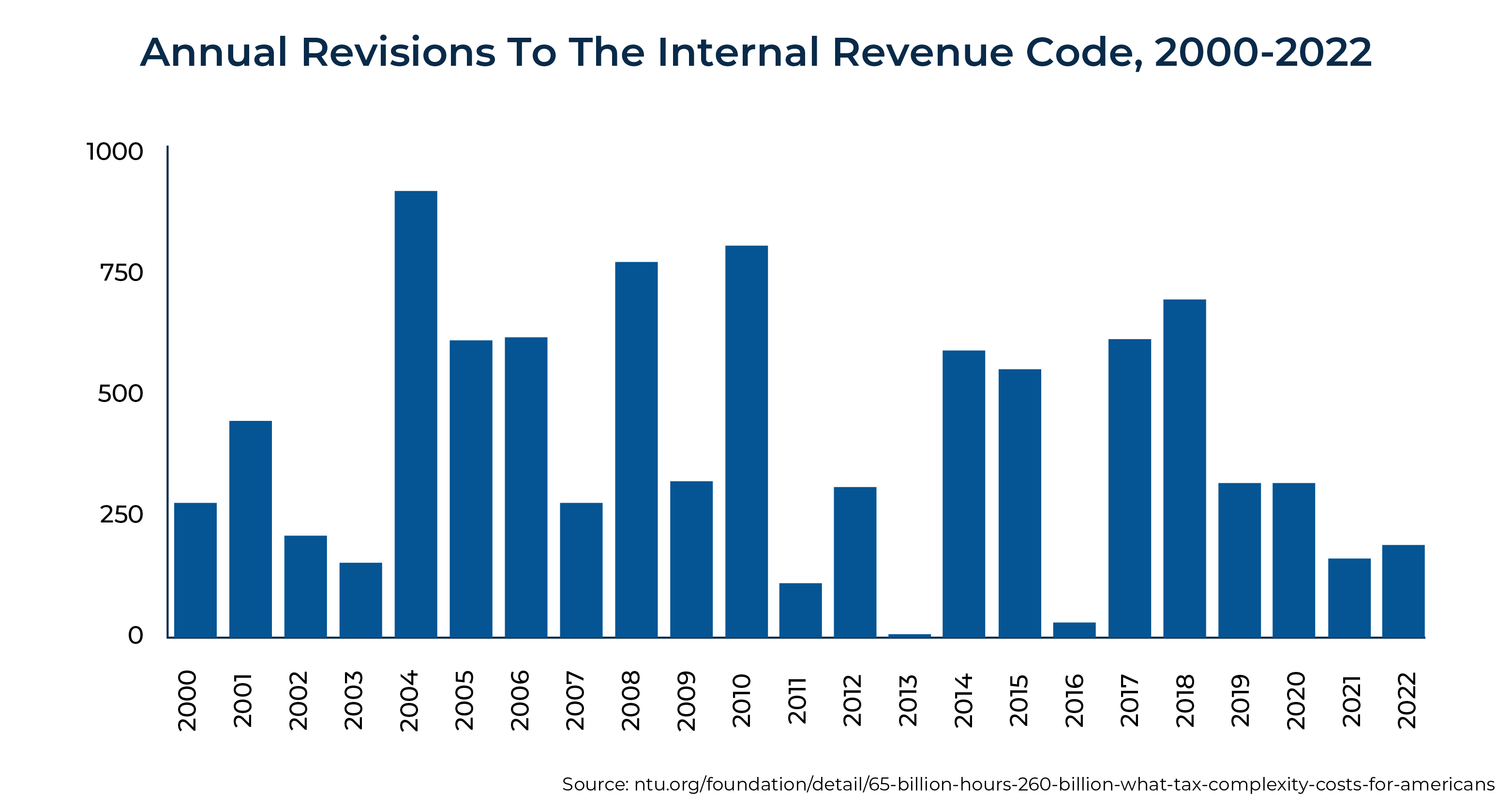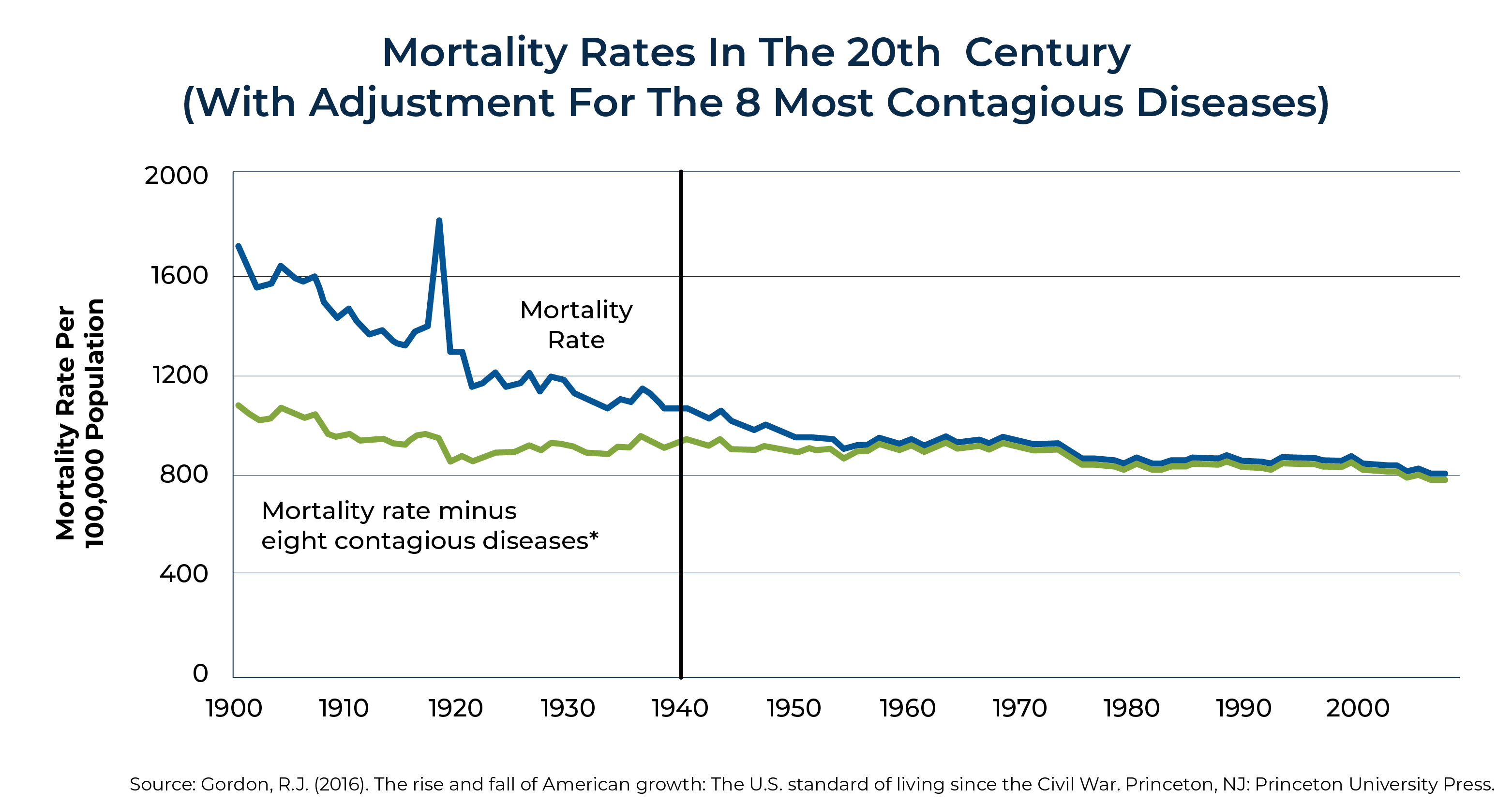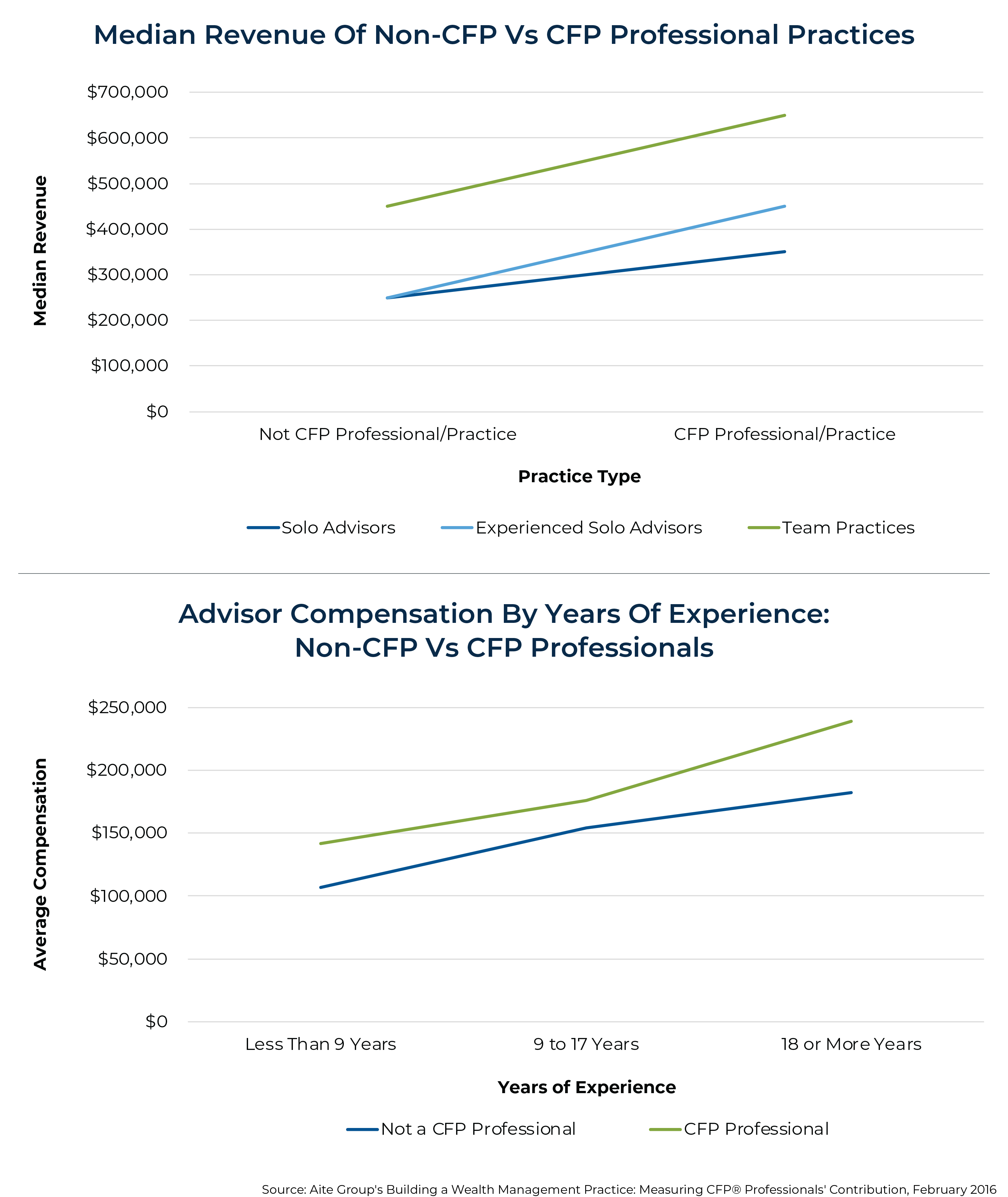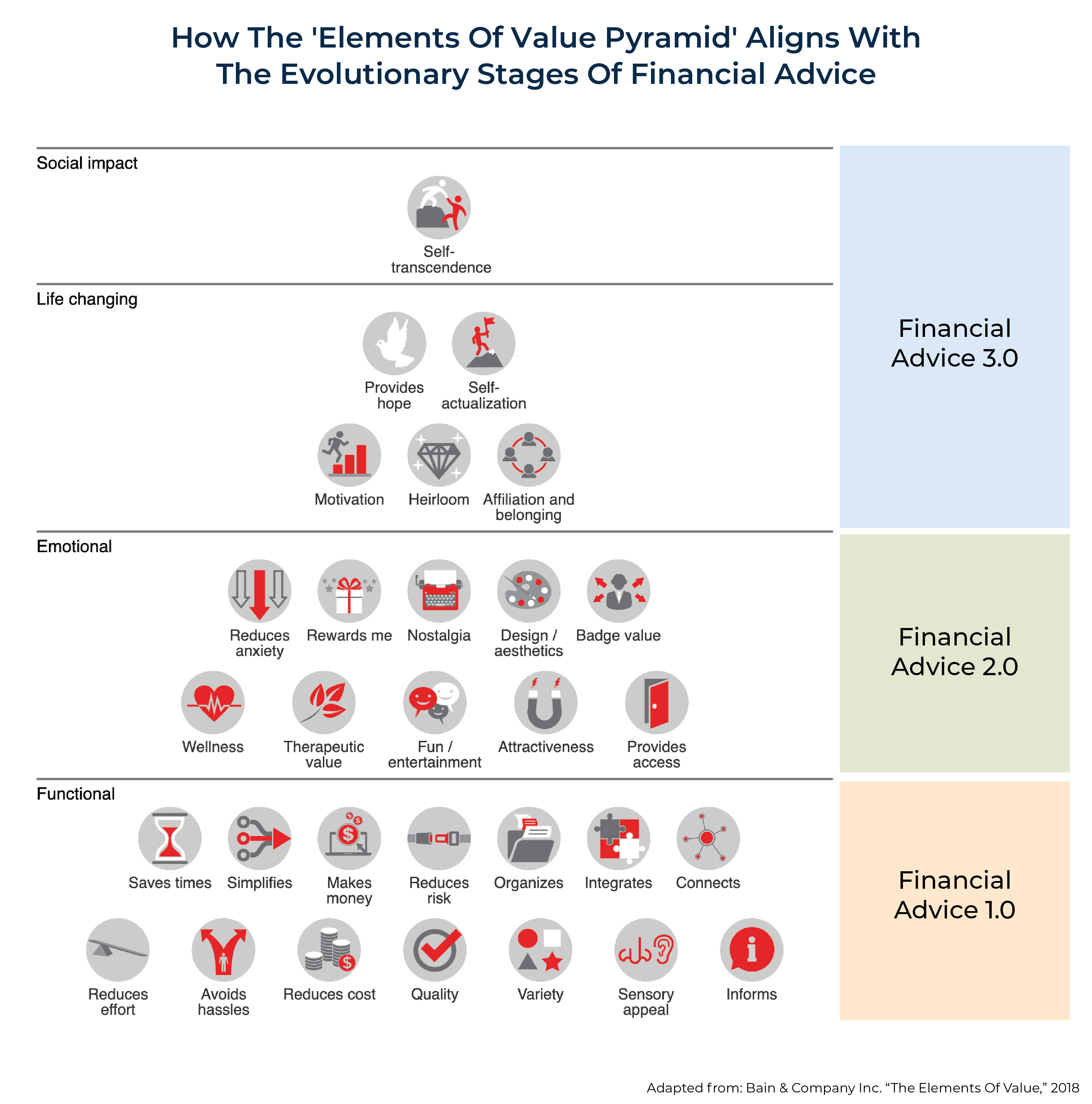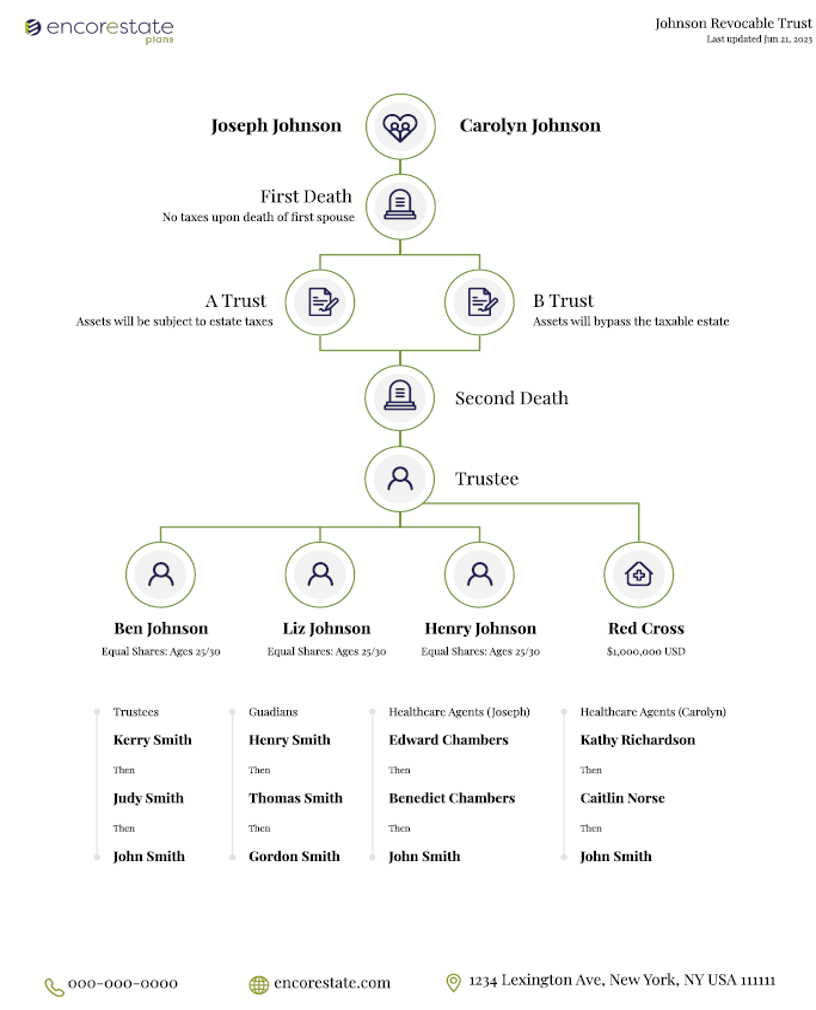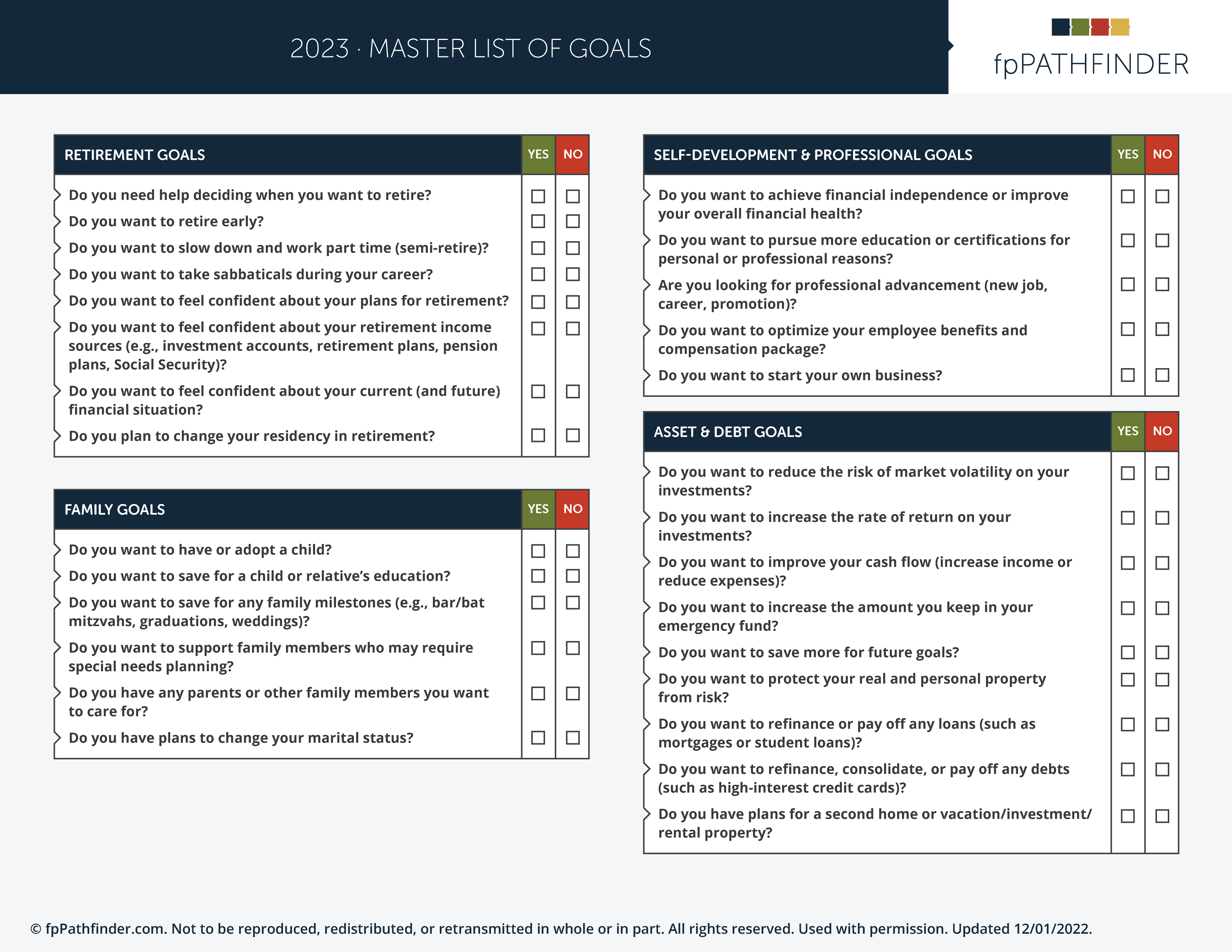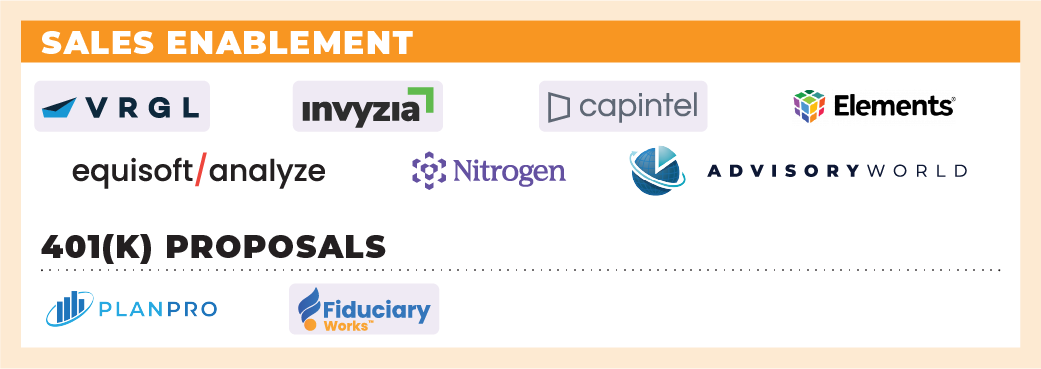Executive Summary
Professional service industries tend to evolve over time as the regulatory environment evolves and new technologies emerge. For instance, the financial advice industry has seen many changes to regulations (for both advisors and their clients), advisor business models, and the advisor technology landscape. These changes all have the potential to change the industry by shifting the current focus on selling financial products (including financial plans themselves) to providing a more in-depth and personalized experience that helps anticipate future issues in a client's life and better help them identify the goals that will help them thrive. And the wide scope of technology tools supporting advisors to shift into providing more client-centric services makes this new era in the future of financial advice possible!
The changing patterns in how financial advice is delivered can be compared to the similar trends seen in the evolution of medicine. Dr. Peter Attia, author of the book Outlive: The Science & Art of Longevity, describes the trajectory of medicine in 3 stages: Medicine 1.0 represents the time in history when healers believed that illness was attributed mainly to supernatural forces, Medicine 2.0 represents our current state of healthcare, in which genetic makeup and the environment play a major role in illness and disease, and where the focus of doctors lies primarily on the administration of treatments to cure and mitigate human ailments; and Medicine 3.0 is the projected future direction of medical care, where, instead of taking a reactive approach to disease and illness, healthcare practitioners instead invest more energy focusing on preventing illness and maintaining good health in the first place through more personalized plans for patients.
In the context of the financial planning industry, whereas Financial Advice 1.0 and 2.0 represent our past and present industry's reactive focus on coming up with solutions to address client problems, Financial Advice 3.0 offers an optimistic future glimpse of financial planning where advisors offer deeply tailored planning experiences, pairing human advice with digital service and support to fully engage clients in a more proactive approach to financial planning. Specifically, Financial Advice 3.0 improves on the previous iterations of planning by involving a more thorough technical analysis of a client's unique situation than it did before and drilling deeper to reveal more planning opportunities to present to clients.
Furthermore, with the efficiencies built-in to emerging technology (ranging from tax planning software that helps with the tactical aspects of executing tax planning strategies, to estate planning software that helps clients better understand their estate plan, to specialized planning software that lets advisors go deeper into various planning areas important to their clients, and even to advice engagement software that engages clients with the advice provided), advisors can focus more of their time on enhancing the 'softer' side of providing advice to clients and not just implementing a relatively static financial plan. And by building more empathetic relationships and having deeper conversations with clients, advisors who implement Financial Advice 3.0 build the trust needed to fully understand the client's unique situation and concerns while creating a highly engaging client experience.
Ultimately, the key point is that financial advisors have new technologies and approaches that increasingly support a shift into a more proactive, interactive, and dynamically engaging version of planning for clients – Financial Advice 3.0. This approach comes with a new generation of tools and resources that allow advisors to focus on building stronger client relationships and providing clients with a more meaningful planning experience. Which could lead not only to better planning outcomes for clients, but also to new opportunities for advisors to grow their firms!
Over the last 5 to 10 years, there have been a number of significant changes that have impacted the financial planning profession. And with so many emerging themes, it can be a challenge for advisors to make sense of where our industry stands now and to understand where the industry is headed over the next 10 to 15 years.
In a recent episode of the Rethink. Financial Advice podcast, we talked about many of the parallels the financial planning profession has with the medical field, and how we expect to see a growing segment of financial advisors adopting more tools, technology, and processes to help them provide more value to clients as the landscape of the financial planning industry changes. These changes can be attributed to 2 broad themes that affect virtually every professional industry (and especially healthcare, which we will expand upon later).
The first theme deals with technology shifts. The cost to develop software has dropped precipitously, which has opened the door for building software that would have been prohibitively expensive to build in the past. We're witnessing a new evolution to this theme right now as AI gets incorporated in many software tools.
The second theme deals with the changing attitudes in our society in relation to the shifting technology. Professionals (like accountants, financial advisors, and doctors) are quickly adopting technology to help them. Similarly, consumers are more open to a professional using technology to help them. For example, a recent Forbes Advisor Digital Banking survey indicated that 78% of adults prefer to bank on a mobile app or website, while another Forbes Advisor survey revealed that over 50% of survey respondents use digital wallets (like Apple Pay) more than traditional credit/debit cards. And JD Power's 2023 U.S. Full Service Investor Satisfaction Survey found that consumers prefer a blend of human and digital interaction, regardless of generation.
As consumers move from a mindset of "I think my data is safe in the cloud" to "What do you mean I can't do this on my mobile device?!", the expectations for technology are moving at lightning speed. Given the trend of adult children getting more involved in the affairs of their aging parents, it only makes sense for advisors to consider the next generation of their client's evolving digital expectations.
The changing attitudes toward technology are happening from within the profession as well. As younger Gen X, Millennial, and Gen Z individuals step into the roles of lead advisor, business owner, or decision maker for an advisory firm, they are more inclined to incorporate technology into their process.
3 Trends Impacting The Financial Planning Profession
The shifting technology trends and social attitudes about evolving technology we see today have created a flywheel effect where more new technology is being developed faster than ever before.
As a result, these broad themes have played an important role in addressing 3 particular trends impacting financial advisors.
More Complicated Rules And Regulations That Affect Investors/Clients
First, rules and regulations continue to become more complicated. According to the American Bar Association's publication, the ABA Section of Taxation News Quarterly, a 2005 study concluded that the number of words in the Tax Code had more than tripled in the preceding 30 years. And, according to the National Taxpayers Union Foundation, Congress enacted an average of 399 changes to the Tax Code per year!
This naturally creates the potential for a lot of confusion among businesses and individuals. It highlights a rising need for clients to seek out a financial advisor as their financial lives grow more complex. But at the same time, it becomes harder for an advisor to help a client because of the constantly changing laws, creating an opportunity for technology to solve. In many cases, advisors are availing themselves of technology to make sense of all the confusing and ever-changing rules that would have otherwise been too time intensive for the advisor to interpret on their own.
New Business Models
Building on the growing complexity of a client's financial life, many different business models are emerging from financial advisory firms to address their clients' unique needs. We are seeing a rise of subscription models as a pathway for advisors to attract clients who otherwise may not be a good fit for the traditional AUM-based price model (like an emerging doctor who may be hampered by student loans and has not yet built up substantial assets, but who has large earning potential).
Some of these newer models are based on a flat subscription (such as $250 per month charged to the client) or are sometimes based on fees scaled according to the client's income. Regardless of the model that's selected, the recurring theme emerging in these approaches is that advisor fees aren't buried in data listed on a portfolio performance report or as investment fees on a brokerage account statement (where they can easily be missed by the client), but rather show up on the credit card or bank statement. This makes the advisor fee more front and center for the client to evaluate. As such, advisors operating in a subscription model are leading the way to justify their fees by demonstrating ongoing value. And to help them do this while leveraging their time, advisors are looking to new technology for help.
Rise Of Advisor Fintech Categories
The culminating effect of these trends – more complex rules and regulations that impact clients and new business models – leads to a 3rd trend, which is an increased number of advisor fintech tools to help an advisor navigate these challenges. 10 years ago, a financial advisor's tech stack mostly consisted of a financial planning application (with eMoney, Money Guide Pro, and Naviplan as the most common). But now, with hundreds of financial planning tools available, an advisor has a wide selection of options to build a tech stack tailored to their service offering and their clients' needs.
Within 5 years, the Kitces.com FinTech map has doubled in the number of featured AdvisorTech businesses and added an additional 5 categories (growing from 29 categories introduced in April 2018 to 37 categories featured in January 2024). While Right Capital has taken Naviplan's place as one of the top 3 financial planning tools, the most interesting aspect is the rise of software that complements traditional financial planning software.
The point is that there are many resources to help advisors address not only the increasing complexity of regulations that face clients and investors but also the growing business models available, all of which are designed to complement traditional financial planning tools.
A Look At The Evolving Field Of Medicine
While the changing landscape of technology and social attitudes around adopting new tech tools may make our industry feel like it is in a constant state of disruption, we are actually evolving into a new, more modern, more proactive profession. A new era is emerging that will become more common for financial advisors over the next 10 to 15 years.
 In order to visualize how we want our profession to evolve in the near future, it helps to understand where we have come from, where we are now, and how we want to change. To help put this process in perspective, we can look to the field of medicine, where a similar approach is applied. In his recent book, Outlive: The Science & Art of Longevity, Dr. Peter Attia uses this same strategy of examining the past and present of medicine in order to propose how the future of medicine must change.
In order to visualize how we want our profession to evolve in the near future, it helps to understand where we have come from, where we are now, and how we want to change. To help put this process in perspective, we can look to the field of medicine, where a similar approach is applied. In his recent book, Outlive: The Science & Art of Longevity, Dr. Peter Attia uses this same strategy of examining the past and present of medicine in order to propose how the future of medicine must change.
The practice of medicine thousands of years ago was based largely on the idea that disease and illness resulted from supernatural forces with no basis in science. And because the scientific method had not yet been developed, medical treatments were largely based on folklore, guesswork, and rules of thumb. There were no formalized processes to understand, diagnose, or treat illness. Peter Attia describes this as Medicine 1.0.
Then, in the late 1880s, Medicine 2.0 emerged. The medical breakthrough that ushered in Medicine 2.0 was the discovery that illness actually comes from germs and not "bad air". In conjunction with the scientific method that had finally been developed a few centuries earlier (and which enabled doctors and scientists to follow a systematic process to understand diseases and develop effective treatments), a multitude of antibiotics were discovered to treat and cure illnesses. The medical profession has excelled during Medicine 2.0. If you are ill, medicine can cure you – just look at how quickly a vaccine was created to address COVID!
While it's true that over the past 100+ years, our health span and longevity have increased, it's largely only improved because of the eradication of 8 contagious diseases (like measles and smallpox). We're still largely operating in a Medicine 2.0 world because if you're sick, chances are there is some treatment that will make you better. But if you're not sick now and showing no symptoms, doctors aren't in a position to offer much help. Generally, doctors don't often provide much guidance to relatively healthy individuals to optimize their lifestyles and minimize their chances of developing chronic diseases such as diabetes or Alzheimer's decades from now. Individuals are left largely to their own devices to navigate their health by managing their diet, exercise, and sleep or to seek out help.
According to Peter Attia, this shows up in the data – the mortality rate, after backing out the 8 most contagious diseases (for which treatments have been found), has not substantially declined over the past 100 years. It's thought to have held steady because so little progress has been made against long-term diseases like cancer, Alzheimer's, heart disease, and diabetes, which are best addressed through preventative actions that must be implemented decades before symptoms even begin to emerge.
But cracks in the old way of doing medicine are emerging through the rise of preventative treatments. This is the beginning of what Attia refers to as Medicine 3.0. In his book, he states that the focus of Medicine 3.0 is to maintain long-term health and "not to patch people up and get them out the door, removing their tumors and hoping for the best, but rather to prevent the tumors from appearing and spreading in the first place."
This aspect of preventative medicine is becoming more widespread in mainstream media, with articles in The Wall Street Journal about improved medical scans looking for potential illnesses years or decades before they materialize and how food and insurance companies are looking at ways to develop diets to prevent medical conditions.
Attia distills the focus of Medicine 3.0 into the following 3 principles:
- Medicine should focus more on the prevention (versus just the treatment) of disease and illness;
- Medicine should be personalized and tailored to the specific needs and genetic makeup of the patient; and
- Medicine should focus more on prolonging our lives to enjoy a longer healthspan – our healthy years free of disease and illness – instead of simply prolonging our lifespan to delay our death (and spending many of our later years suffering from illness and disease).
Medicine 3.0 is still very much in its infancy stage and would require a substantial shift in the way healthcare in the U.S. has been traditionally administered. Because of this, not all patients are ready to embrace this more preventative-focused approach. It would actually require patients to take a more active role in their own healthcare by becoming more informed about what it takes to improve their healthspan. Despite this, there is a lot of interest among patients who do want this kind of medicine.
Financial Advice Can Be Viewed Along A Similar Perspective As Medicine
When it comes to financial advice, its evolution into the future can also be considered with a tripartite model similar to the Medicine 3.0 system discussed by Dr. Peter Attia in his book Outlive: The Science And Art Of Longevity. And it is within this framework that we can get a sense of where our industry is headed.
Financial Advice 1.0: The Pre-Financial Plan Era
Back in the 1960s and into the 1980s, financial advice was provided as a means to sell an investment product. Stocks, mutual funds, and life insurance policies were all sold to help clients address specific problems. The financial advice that was provided to the client was given in order to make a sale because, at the time, that's how advisors were compensated – commissions. The whole idea of a holistic financial plan was unknown, but it was a start, and it was better than nothing. This era can be considered 'Financial Advice 1.0'.
What's interesting about this approach to solving a client's problem is that it's still quite common within the industry today. The reality of the financial services industry being dominated by the placement of money solutions still supports the Advice 1.0 model. Even today, the largest group of 'financial advisors' offers a 1-time needs analysis to justify their 1-time sale of solutions to their clients.
Financial Advice 2.0: The Financial Plan Era
In the 1990s, a concept caught on that had been slowly growing in popularity in the preceding decades. This concept was called "financial planning" and introduced the preparation of a financial plan document as a service provided by financial advisors to their clients. The early financial planning movement was geared mainly toward the High-Net-Worth (HNW) community that was willing to pay for such advice and demanded more services and clarity behind their financial decisions.
The advent of CFP certification started a significant move towards standardizing a financial planning process, and eventually, the business followed suit. In 2016, CFP Board commissioned the industry analyst Aite Group to conduct a study on the business metrics of financial advisors with and without the CFP marks. The Aite Group study revealed that CFP certificants earned significantly more revenue and compensation than non-certificant advisors.
This finding suggests there is demand among consumers for financial planning by professionals who can make sense of all the different financial instruments in a client's life, understand where the true gaps are, and recognize opportunities to do more planning. Over the decades, what we refer to as Financial Advice 1.0 (i.e., needs-based advice sales) has consistently evolved toward Financial Advice 2.0 (i.e., broader-based financial planning) as consumers continue to look for guidance in solving their financial problems and meeting their goals.
With this movement, the original concept of financial planning started shifting from "creating a financial plan as a way to make a sale to "engaging in a financial planning process to address the client's problems".
Because of this divergence, advisors moving toward Financial Advice 2.0 began to incorporate a more holistic view of the client's situation into their core planning analyses. However, early planning technology tools that could offer advisors the ability to provide comprehensive plans using dynamic future assumptions (e.g., tax rates, inflation rates, expected investment return rates, life expectancy, income and expense projections, etc.) were largely unavailable, as the overwhelming use of planning tools aligned with sales enablement simply had a much narrower focus.
Furthermore, while many advisors shifting to Financial Advice 2.0 continued the longstanding practice of providing clients with a physical copy of their financial plan (as if the plan were the final prize offered at the end of a long data-gathering process), the growing need for ongoing advice to help clients manage their changing needs and evolving goals made updating a client's initial (and often massive) paper-based financial plan an extremely time-consuming and laborious undertaking.
This emerging paradigm shift – from a one-time financial plan to an ongoing financial planning process – ushered in a variety of new business models as advisors moved away from a sales mentality to one of providing ongoing advice for a fee. Largely speaking, this is where many advisors operate today or aspire to adopt an advice-based model in the future.
As a result, the technology designed initially to serve advisors operating in a Financial Advice 1.0 world has had to start catering to advisors gravitating toward a Financial Advice 2.0 model, with more dynamic financial plans that were easier to update on an ongoing basis to reflect the evolving financial guidance their clients needed as their lives and goals changed.
Even though financial planning purists may point out that financial planning was always meant to be an ongoing process, it still took several decades for a process-based approach to catch on as a common way for advisors to describe their process. Fortunately, though, we have seen more technology over the last 15 to 20 years that allows advisors to create better, more intuitive plans.
Which leads us to where much of financial planning is today. Financial plans created in our current Financial Advice 2.0 era are generally much shorter (even moving to extreme simplicity like the one-page financial plan) and more dynamic than earlier plans, allowing advisors to easily change and update the plans, ultimately resulting in much more consumable content for the client. Not only has there been greater acceptance on the part of advisors to adopt the technology in their planning process, but there has also been greater acceptance on the part of the client to understand and use the technology.
But for some advisors operating with Financial Advice 2.0, there has been a new emerging issue: Once they do all the work with their clients to get them fully on track with their financial plans and their investment selection is fine, there comes a point when there doesn't seem to be much of anything else that needs doing. At this stage, how do advisors continue to provide value and justify the fee that they are charging when their client's plan is on track?
It's that challenge that is driving the change in our industry now.
Financial Advice 3.0: Value Beyond The Plan Era
Just as all living things evolve, so too do businesses, markets, and processes. The burgeoning evolution of advice is what we call Financial Advice 3.0. It is an elevated idealism supported by the thesis that what consumers really need is a financial advocate. A McKinsey & Company report released in 2020 envisioned that "as advice becomes increasingly analytics-driven and automated, advisers will shift their focus to comprehensive planning beyond the portfolio". And that, in the next 10 years, they will become "more like integrated life/wealth coaches who advise clients on investments, banking, healthcare, protection, taxes, estate, and financial wellness needs more broadly."
Over the decades, financial advisors have constantly wondered if their role would be replaced by technology. At one point, it was suggested that mutual funds would replace advisors. More recently, there was a fear that robo-advisors would replace them. And earlier this year, many wondered if they would be replaced by AI. In reality, the impact of this technology serves to highlight the need for a financial advisor to guide the client through all of their options, as clients tend to prefer receiving human-delivered advice supplemented with digital service and support.
So the question arises: How can humans leverage all of this technology to help them become more proactive client advocates by solving multiple intertwined financial decisions and developing multiple areas of expertise?
Importantly, today's tech appears to be moving towards comprehensive and proactive advice experiences that rely heavily not just on the client being heard and understood by their advisor to better uncover planning goals but also on high engagement with technology and collaborative interaction with the advisor. These advice experiences of collaborative engagement give clients and advisors the opportunity to establish a good rapport with each other and to build the foundation of a long-term relationship based on trust.
Universally, we are seeing a demand by clients to take a more active role in their own financial wellbeing as opposed to being lectured or pitched to by their advisor. Financial Advice 3.0 is heralding the desire for participation – and leaning away from one-sided presentation – in the advisor-client engagement.
To summarize, the trends that are most evidently leading the financial planning industry toward Financial Advice 3.0 are as follows:
- Clients are being empowered to identify their priorities and to ask their advisors for additional guidance in the areas where they need more help;
- Financial planning is more complicated now than ever before because of so many rules;
- Technology is being developed to help advisors provide guidance and enhance client engagement; and
- Advisors are stepping up to identify the best ways to continue providing more value to their clients because they want to justify their fees.
It's the combination of these 4 trends that are driving Financial Advice 3.0. Specifically, Financial Advice 3.0 improves the following 2 particular aspects of financial planning:
- Financial Advice 3.0 will involve a more thorough technical analysis of a client's situation than it did before. Advisors will have technology resources to help them drill deeper into a client's situation to uncover more planning opportunities. In many instances, this will require advisors to take a more proactive planning approach to address future planning challenges decades before they arise.
- Financial Advice 3.0 will require improvements in the softer side of providing advice to clients. Advisors will need to be more empathetic and have deeper conversations to build the trust needed to fully understand the client's unique situation and concerns. These improved communication skills are also important to help the client identify and articulate more nuanced goals.
The culminating effect is a much more personalized planning experience for the client. And yet, not all clients will want this level of planning. Like healthcare evolving into Medicine 3.0, the transition into Financial Advice 3.0 will require not only a shift away from more familiar traditional methods but also more effort on the client's behalf. So, Financial Advice 2.0 is not likely to be fully replaced by Financial Advice 3.0, in much the same way that Financial Advice 2.0 has not fully replaced Financial Advice 1.0.
Financial Advice 3.0 In The Context Of The Elements Of Value Pyramid
Another way of looking at the shift from Financial Advice 1.0 to Financial Advice 3.0 is through the lens of the Elements of Value Pyramid developed by consulting firm Bain & Company and presented in a Harvard Business Review study (discussed in depth in a prior blog article, Communicating Client Value By Articulating Your Solution to Their Job To Be Done).
In the context of financial planning, the bottom tier of the Elements of Value pyramid can be thought to represent the role of advisors providing a solution to a client's Functional needs, such as recommending a life insurance policy, a stock that pays a good dividend, or a well-diversified mutual fund. This is the zone of Financial Advice 1.0.
In the next tier of the pyramid, advisors' roles expand to include ongoing services that ensure Emotional value to the client, such as focusing on planning aspects that boost the client's confidence that their goals will be reached, alleviating stress about a sustainable retirement, and reducing the fear of running out of money – and monitoring the client's progress and priorities over the long-term of the plan. This is the Financial Advice 2.0 zone.
Finally, Financial Advice 3.0 is represented by advisors' roles in the top 2 tiers of the pyramid that address Life Changing and Social Impact values. Systematically creating more value on behalf of a client over decades can have a compounding effect that results in substantial improvement with profound effects on the family.
For example, an advisor who advocates proactive tax planning for 1–2 decades in order to minimize the future tax impact on the client once they become subject to RMDs can have a dramatic impact on the client's life in retirement (and may even provide them with the means to reach a financial goal they thought was unrealistic). Or, by encouraging a client to slowly but consistently increase their savings rate over the course of many decades, the advisor can help the client find themselves in a future situation better than they could ever have imagined.
We are starting to see elements of Financial Advice 3.0 unfold now: Clients are making statements along the lines of "I came to you needing help to retire early, and I did that. But you also listened to what was most important to me, and because of that, you helped me establish a sizable inheritance for my children on top of working through my retirement planning. I never dreamed that would be possible!"
Advisors Can Embrace Aspects Of Financial Advice 3.0 In Many Different Ways
To the seasoned advisors reading this article, you might be thinking, "This approach isn't new; I've been operating this way for 20+ years." If that's the case, know that your forward-thinking mentality has played a pivotal role in the evolution of our industry. While Financial Advice 3.0 may not have fully replaced Financial Advice 2.0, it does highlight where our industry is headed. It's even been framed as Financial Advice 3.0 elsewhere, including the podcast It's Never About The Money hosted by Australian financial advisor Joe Stephan.
For advisors who are eager to stay ahead of the curve and interested in implementing Financial Advice 3.0 to provide value beyond the financial plan, there are some recurring themes and strategies that are being adopted and gaining traction among many advisors.
Strategies To Focus On More Technical And Proactive Planning
When a financial plan is on track for a client, advisors have the opportunity to look at several growing technology categories to find ways to provide additional value to the client, going beyond what is covered in the financial plan.
Tax Planning
Historically, tax planning has been a complex, time-consuming process that few advisors offered to their clients. But tax planning has become more accessible thanks to tools like those offered by Holistiplan, which allowed advisors to simply upload a tax return to analyze the client's data and glean useful insights about the client's tax situation.
So, while general financial planning software can help to set the strategic direction for the client, tax planning can help with the tactical aspects of executing the plan. And with the burgeoning tax planning tools available to advisors, advisors have options to provide additional value to the client every year by helping them manage their overall tax liability in future years. This resonates with clients because they are always looking for ways to drive their tax bills down.
Estate Planning
A client who is on track to reach all of their immediate financial goals may often benefit from additional conversations around long-term estate planning strategies. This particular domain is experiencing significant growth with emerging technology that presents innovative solutions and opportunities to address these advanced planning needs. Similar to the rise of tax planning, the tools being developed can help clients better understand their estate plan, summarize the key information in plan documents that can be hard to find for a client to read on their own, and even establish basic estate planning documents. The graphic below offers a great example from EncorEstate Plans that highlights how technology can help clients visualize assets flowing to their heirs.
Specialized Planning
In addition to general financial planning tools, there has also been a rise in more specific planning tools that help advisors go deeper into particular aspects of a client's financial plan. For example, retirement income distribution tools like Income Conductor and IncomeLab can enhance general retirement planning recommendations by showing clients how they can take income during retirement in a tax-efficient way. This can give clients confidence that even after they retire, their advisor will continue to provide additional value by mitigating taxes and investing their assets in alignment with their income distribution strategy.
Advice Engagement
Advice engagement focuses on improving clients' engagement with the advice that is provided, which can be a challenging area for advisors, given the limited technology tools available to help them achieve this. However, a variety of technology tools have been developed that help advisors create content that is more customized (and, therefore, more relevant) for clients, which encourages clients to act upon the advice from the advisor.
Take Asset-Map, for instance; it helps advisors create interactive visuals that depict the relationships in a client's life and how their money decisions can impact them. Asset-Map's strength lies in its ability to present a bird's-eye perspective to the client, helping them understand the actual strategic direction that their financial plan should take. By design, it is introduced very early in the planning process and serves as the basis for creating the plan. Additionally, it can also be used as a quick reference tool used well after the client is on track with their plan. With its concise and intuitive presentation of the client's (usually) complex financial life, Asset-Map meets the evolving need for real-time insights into a household's current financial situation, supporting informed and proactive planning.
At fpPathfinder, one of the most popular guides is the Master List of Goals checklist, shown below. It consists of a comprehensive list of questions that help clients identify all of their current financial planning concerns and potential goals they may want to consider in the future. The checklist is based on the research presented in the July 2019 Journal of Financial Planning article, "Goals-Based Financial Planning: How Simple Lists Can Overcome Cognitive Blind Spots", by Ray Sin, Ryan Murphy, and Samantha Lamas. The authors propose that reviewing a comprehensive list of goals spanning various financial planning domains enables clients to develop a more thorough and pertinent set of priorities, sometimes even prompting them to reevaluate and recognize what truly matters most to them. The Master List of Goals checklist has proven to be beneficial for advisors working with longstanding clients, uncovering previously unexplored planning opportunities. Even clients on track with their plans have found that reviewing this extensive list of planning goals can spark inspiration for new goals, which they can pursue with guidance from their financial advisor. In doing so, the advisor demonstrates their value by playing a crucial role not only in helping the client identify additional planning goals but also in developing an actionable plan to achieve those goals.
Softer Side Of Financial Planning
One of the benefits of leveraging technology is that, by streamlining the financial planning process and creating a more collaborative experience, advisors can focus on improving the client relationship through more interaction and engagement with clients.
While a growing number of analytical tools play an important role in Financial Advice 3.0, the softer side of financial planning – involving communication skills and relationship-building tools – is equally important. As noted earlier, McKinsey & Company released a study envisioning that, by 2030, advisors will be less like investment managers and more like wealth coaches. Tools and coaches like Shaping Wealth and Grief Smart Advisor can help advisors get there.
In some cases, advisors can support more engagement by changing how they prepare clients for upcoming meetings. For example, instead of asking clients if there is anything they want to cover, Meghaan Lurtz suggests 'flipping' the meeting around by sending simple pre-meeting assignments for the client (such as reviewing a short video highlighting some of the items the advisor intends to cover) to spur their thinking and encourage their feedback.
Another example is to focus on the types of questions advisors ask clients to get to the deeper root causes of what concerns them most. In her webinar Upping Your Question Game: 25 Questions for Better Client Connections Throughout The Financial Planning Engagement, Meghaan Lurtz discusses how advisors can ask clients questions that provoke more meaningful conversations.
In fact, many technology tools being developed today are specifically designed with frameworks that help advisors improve engagement with clients, often providing tools that help advisors not only create better visuals to help clients understand financial planning concepts but also produce more effective and insightful financial planning deliverables.
Business Considerations
From a business standpoint, Financial Advice 3.0 can be a compelling business model that may encourage some advisors to reconsider how they do business. Instead of maintaining an AUM-based fee structure, advisors might consider flat subscription fees (e.g., charging clients a $250 monthly fee, a model that has grown in popularity thanks to XY Planning Network and Advice Pay), charges based on a client's income, or a hybrid approach that combines fees based on both the client's net worth and income. Such methods can help to better align an advisor's compensation to what they are actually doing for their client.
From a marketing standpoint, there is already a segment of clients looking for value beyond having a financial plan prepared for them – these clients also want ongoing support to help them ensure they stay on track toward reaching their goals and that no potential issues or opportunities are overlooked (especially those they might not even be aware of in the first place!). This can be an interesting niche to consider in itself, as it opens the door to potentially structure a Family-Office-style approach where an advisor works more closely with just a few clients. It also raises the question of whether an advisor could justify increasing their fees to provide this more detailed level of service (akin to a concierge doctor who charges patients a premium for 24/7 access; as a point of reference, some doctors charge tens of thousands of dollars to help patients with disease prevention!).
It should be noted that with many of the technology improvements, providing more value does not necessarily mean the advisor must also spend more time doing work for the client. Many technology tools offer wonderful features that save time and help provide advice at scale, features that did not exist even 5 years ago. For example, fpPathfinder has a checklist to help ensure no issues are missed in the annual client meeting review. Asset Map offers a feature called Signals that allows an advisor to quickly identify similar planning issues across all of their clients (e.g., listing all clients who likely have too little life insurance) and to facilitate a line of communication with just those clients. In both cases, the technology helps the advisor to quickly and systematically improve their planning process.
Attracting Clients Looking For Financial Advice 3.0
Looking beyond the business model itself, there are a variety of Financial Advice 3.0 tools that can be used by financial advisors to connect with prospects who are looking for help. For example, Couplr is a lead generation tool that helps advisors find suitable prospects based on a variety of personal and financial dimensions, connecting them to people for the right reasons at the right time and place. With a growing segment of consumers looking for financial advocates who offer planning guidance on an ongoing basis, Couplr can help connect those consumers with advisors who can cater to their needs.
Once the lead has been identified (perhaps through Couplr or another lead generation tool), the advisor can use an entirely new breed of tech tools that focus on Sales Enablement. These tools are designed to help advisors nurture leads and turn them into clients by providing advice beyond the financial plan.
Earlier this year, Sales Enablement was added as a new category to the Financial AdvisorTech Solutions Map. These Sales Enablement tools help advisors focus on closing prospective clients who have already found the advisor and are going through the bottom-of-funnel sales process, not on bringing top-of-funnel leads to the advisor to begin with. Many of the tools in this category can demonstrate the value beyond the financial plan that Financial Advice 3.0 prospects can expect to receive by working with that advisor.
For example, consider Nitrogen and Elements, 2 FinTech tools designed to enhance advisor-client interactions, especially during the initial stages of prospect engagement. Elements presents 11 key metrics (such as Savings Rate, Insurance Rate, Real Estate Term, Tax Rate, and Burn Rate) to help the prospect understand how much more is really involved in their financial situation. By doing so, it helps illustrate that the advisor's role extends far beyond 'just' creating a financial plan. An advisor and client could have meaningful conversations throughout the year on any one of these metrics. A prospect considering 2 advisors is more likely to be drawn to the one who utilizes a holistic framework for financial analysis, as opposed to an advisor who simply promises to deliver a financial plan.
On the other hand, Nitrogen takes a different approach, emphasizing that despite the dynamic nature of an individual's risk tolerance and financial perspectives, the advisor will be there for them throughout the process. Through Nitrogen's Check-in tool, advisors can consistently monitor and understand how their clients are feeling about the markets and their own financial future. This practice underscores the advisor's commitment to being a steadfast partner throughout the client's financial journey, adapting to changes in their sentiments and circumstances.
In both cases, whether it's Nitrogen or Elements, the underlying message is clear: these tools empower advisors to extend their guidance and support far beyond the confines of a traditional financial plan.
Providing value beyond the financial plan will become a defining characteristic of financial advisors over the next 10 to 15 years. The financial plan itself, once the centerpiece of many advisory services, may even become commoditized to the point where advisors will need to differentiate themselves in order to attract clients by offering more than 'just' a financial plan. It could also drive advisors entrenched in the Financial Advice 1.0 era to evolve their service model, potentially ushering in a new wave of advisors transitioning toward more innovative practices based on Financial Advice 2.0 and 3.0.
This is a trend that is being driven by an increasing number of consumers yearning for engaging, holistic advisory experiences. And, thanks to today's emerging technology, advisors can seamlessly integrate powerful tools into their service models to offer a more holistic and engaging experience for clients by allowing them to blend the precision of financial planning with the art of personalized guidance.




